Tagged: Gemology
Below you will find content on the site that is "tagged" with the topic: Gemology.
Fine Jewelry University (Show All FJU Articles)
-
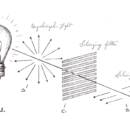
The Magic of Polarized Light
In this article we do a deep-dive on polarized light and how it is used in gemology. You'll learn what polarized light is and how it's used in our daily lives. You'll also see lots of great, visual examples of polarized light in action as it is used to help identify gemstones in our lab... read more »
-
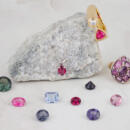
Gem in the Spotlight: Spinel
Spinel may be one of the most underappreciated gemstones in all of history. For centuries it has been confused with more popular gems like ruby and sapphire, and only recently have people begun to appreciate spinel for its own natural beauty. Commonly made in a lab spinel has been used a lower cost substitute for other gems, but natural spinel is actually a stunning gem in its own right. This in-depth article covers the gemology, history, and lore of this amazing and often overlooked gem... read more »
-

Gem in the Spotlight: Alexandrite
Emerald by day, ruby by night, more expensive than diamond and more illustrious than sapphire, emerald, or even ruby, alexandrite has been known around the world as one of the most sought-after gems for the better part of 200 years. But, what makes this stone so special? Gemology of Alexandrite Alexandrite is the extremely rare, color-change variety of a gem species called Chrysoberyl. It appears bluish-green in daylight, fluorescent light, and some LED light. Under incandescent light, candle, and firelight, alexandrite appears purplish-red. This is because of how the trace... read more »
-
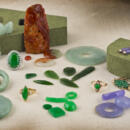
Gem in the Spotlight: Jade
Jade has one of the richest heritages of all gemstones. People have been using jade from as early as 6,000 BC, and it has been an incredibly important part of Asian, Central American, and North American history ever since. But, what is jade, and what has given it such a prominent place in human history? The term “jade” actually refers to two completely different gems: nephrite and jadeite. These are actually two unique mineral species, but since they have been confused for so many years, and are similar in many... read more »
-
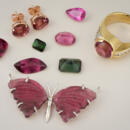
Gem in the Spotlight: Tourmaline
Tourmaline is a beautiful gem that comes in a huge variety of colors (sometimes even within the same stone). This article teaches you all about the history, folklore, and gemology of tourmaline including varieties like rubellite, indicolite, paraíba, and more. You'll also learn about California tourmaline and the unique piezoelectric property that has made tourmaline as useful as it is beautiful... read more »
-
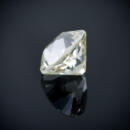
The History of Diamond Cuts
The cutting of diamonds is an art and science that has evolved over centuries of innovation and human ingenuity. See the history of diamond shapes and diamond cutting as we trace them all the way from the ancient Roman point cut to the modern round brilliant. You can see real photos of actual examples of most of the diamond cuts and 3D CAD renders of the oldest and most obscure diamonds that we weren't able to find a great example of (please email us if you have good photos or examples of any of these diamonds)... read more »
Pages
-
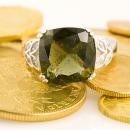
Facts about Asteria
Watch the Asteria TV Commercial Discover the cure for the common gift. It’s so good, it should come with a warning. Watch Now How Rare is Asteria? 3.6× Rarer than Diamonds 130 million carats of diamonds are mined every year. There are approximately 992 tons of diamonds in the world compared with only 275 tons of Asteria. 1,246× Rarer than Gold There are approximately 342,857 tons of gold in the world. There are only 275 tons of Asteria estimated to be in existence... read more »
-

What is Asteria Jewelry?
“You are going to die in 48 hours unless…” No one gives bad news like Dr. House. Giving a boring gift is not as bad as dying, but that’s what it feels like when a gift does not meet the expectations of the one we love. We may not be able to find the cure for cancer or the disease that’s killing Dr. House’s patient, but we have found the cure for the common gift! The cure for the common gift is not of this world alone. It will take... read more »
Blog Posts (Show All Blog Posts)
-
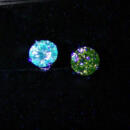
Arden Jewelers Catches Undisclosed Lab Grown Diamond
One of the things that sets us apart from other jewelers is our team of expert gemologists and full gem lab. In the past, we have talked about how a gemologist jewelry buyer can pay you more and how a gemologist can help you find the perfect diamond. Today, we’re sharing another way our gemologists are looking out for you. We recently received a pair of 3 carat diamonds from a trusted and well known diamond wholesaler. As part of our standard evaluation our head Graduate Gemologist, Angelo tested and... read more »
-

Why Would a Gemologist Pay Less for Your Jewelry?
If you're a regular reader here, you know that in most cases a gemologist jewelry buyer can pay more for your jewelry. But, there are a few circumstances where a gemologist may actually pay less than a non-professional buyer. Our goal is to help you get the most for your jewelry whether it is from us or someone else. So, read on to learn about the times when a gemologist buyer like us may wind up offering less... read more »
-
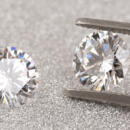
Lab Grown Diamonds
Today, we're announcing an exciting new choice you have for your diamond engagement ring. Lab grown diamonds have been around for decades, but only recently have they become available in high enough quality to be used in jewelry. We'll tell you all about them and explain why you might consider one for your engagement ring. We're also very excited to unveil our new line of eco-friendly lab grown diamond engagement rings called Balance... read more »
-
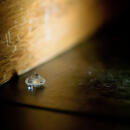
How to Find Your Diamond When It’s Lost
Looking for a diamond that has fallen out of your engagement ring is an incredibly stressful and frustrating experience. We have put together this list of tips and tricks for finding a lost diamond from our years of experience in the jewelry trade. We hope that with these techniques, a lot of persistence, and a little luck you can find your missing diamond... read more »
-
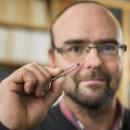
Chocolate Diamonds and a Journey to the Center of the Earth
A tiny inclusion in a chocolate diamond has unlocked a geological mystery. This brown diamond was formed deep in the Earth's mantle and brought to the surface by a volcanic eruption. It holds inside it the confirmation of vast subterranean oceans beneath our feet. This is a very exciting and important discovery. We all know diamonds are a girls best friend, but now it looks like they can be a scientists best friend too... read more »
-

Why Sell Your Jewelry to a Gemologist Jewelry Buyer?
These days it seems like just about everyone is buying gold. That’s right, the local corner market near our shop is now proudly displaying a “Cash for Gold” banner. With so many options, it can be difficult to know who to trust, and where you’re going to get the most for your jewelry. If only there was an internationally respected organization that trained and certified jewelers as experts in their field… It is with great pleasure that we announce that Angelo has just received his Graduate Gemologist (GG) degree from... read more »